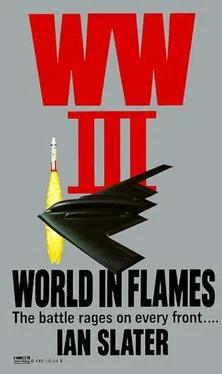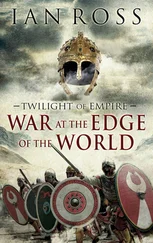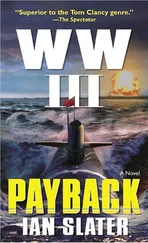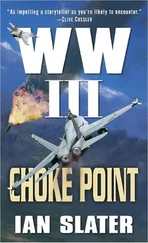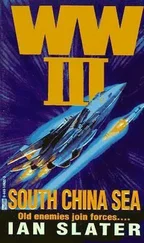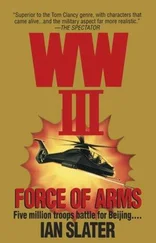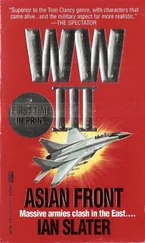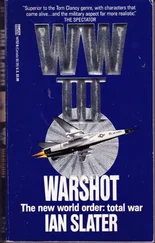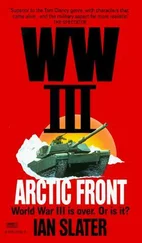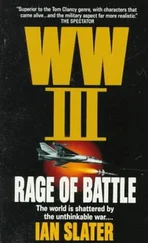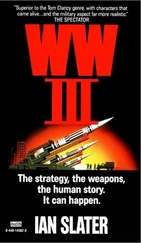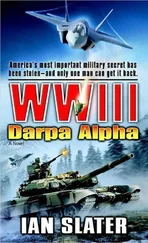It would be toward this position that the Alfa would now head, not at flank speed, lest its pumps be picked up, but at fifteen knots until it was within torpedo range. But this would only work if the enemy kept proceeding on its last known heading. To be absolutely sure where it was and to verify that it was still within the Alfa’s torpedo range, a second Jonah would be released. This noise box, again with a preset capacity of between ten minutes and two hours, would emit a much different noise, the sudden whoosh of a torpedo launch. Once this was picked up by the American captain, he would have to make a split-second decision either to make an evasive dive, hoping to shake off what he would believe to be an attack of metallic homing torpedoes, or to fire his own Mark-48 radar homing torpedoes to hopefully intercept the more quickly fired Russian torpedo.
Captain Yanov looked at his watch. The American could have increased speed, pulling away from the Jonah. He checked with Sonar. “Anything on screen?”
“Nothing but shrimp and ice, Captain.”
“Stand by to release the second Jonah,” ordered Yanov.
“Standing by to release second Jonah.”
“Release!”
“Released, sir.”
“Torpedo room ready?” said Yanov, bending low, his finger still on the intercom button.
“Ready, sir.”
It would be another fifteen to thirty minutes before the second Jonah would be far enough away from the Alfa. If the bait of the firing torpedo sound was taken by the Americans, the Alfa would be far enough back not to be caught in the pressure of the Americans’ exploding torpedoes, the Alfa nevertheless still in torpedo range itself. In any event, if the Americans fired, the Alfa would have an exact fix on them. Using the noise of the Americans’ torpedoes exploding around the torpedo-sounding Jonah, the Alfa would then race forward at full speed, approaching fifty miles an hour — slow, stop, fire its tubes. And wait.
“If he fires,” instructed Captain Yanov, “It will likely be one or two of his forty-eights. Range forty-six kilometers, twenty-five meters a second. Wire trailing until it’s radar homing takes over. And so if he fires, we go immediately to attack. Flank speed. Understood?”
“Understood,” confirmed the torpedo officer. “We’re ready, Captain.”
“Good,” said Yanov. He then turned to the officer of the deck. “If we fire — we’ll wait five seconds to clear, then go to maximum depth. Understood?”
“Understood, Captain.”
“Good.”
The white cottages of Scotland were tiny dots far below, the weather outside the Hercules fine but windy. Inside, however, all David Brentwood and the other twenty-seven SAS trainee finalists were aware of was the thunderous roaring and vibration of the engines.
“Remember!” shouted the SAS sar’major. “You aren’t jumping to entertain the crowd at a county fair. Civilian jumpers don’t have full military kit on their back, so in order for you to maintain starfish posture, you must, I repeat must, control turns and cross tracking by keeping all extremities extended in starfish pattern until three thousand feet, when your chute will open automatically.
“Do not, repeat do not ‘grab air’ unless as a last resort. Wait until you are positive something is wrong with your automatic altimeter release before you attempt to open it by hand under your belly.”
The danger was that trying to grab air directly in front of the helmet in order to maintain stability while using the free hand to pull the reserve chute’s grip could send you into a “tumble,” like a plane out of control — during which arms and legs could become entangled by the chute’s cords.
There was a loud whine and the ramp was going down, yawning over the purplish blue of Scotland’s western Highlands, the glens between the hills no larger than the size of a penny from eleven thousand feet.
The red light went on.
“Stand up!” shouted the sar’major. “Goggles on.”
The stick of twenty-nine men, seven groups of four, the basic SAS unit, with Cheek-Dawson leading, was about to go out for their first HALO.
For Brentwood, Lewis, Thelman, and Schwarzenegger, who were in the same four-man unit and who had stayed together through the grueling “three” and “four” phases of SAS training, the high-altitude, low-opening jump was almost a relief. Anything was a relief after phase two’s killing forty-mile, full-pack, cross-country march — each man alone, with full seventy-pound pack and weapon, having to complete the forty miles in under forty hours.
“Thought Scotland’d be covered in snow in early January,” shouted Lewis.
“Scottish people like being different, Aussie,” said the German. He pronounced “Aussie” with a slow deliberateness that belied his alertness and agility in training.
“East Africa!” said Aussie, looking down at the wild folds of Scotland. “That’s where I’ve seen hills like that before.”
“Thought we were going to Southeast Asia,” Thelman ribbed him.
“Well, somewhere in the tropics,” said Lewis. “Wanna bet?”
“No thanks.”
The sar’major felt good about the group, as he’d seldom heard them talk with such easy banter before their first HALO, even when they’d done regular para jumps before. The camaraderie came from the special cohesiveness formed among the four men who were theoretically leaderless but who had a group confidence that had grown steadily after the exhausting “sorting out” hardships of the first few weeks.
“Green light. Go!” called the NCO, tapping the first man as he went out, looking like a combination of some great bird of prey and a stuntman going for a belly flop. The difference was they were now in full battle kit and would reach 120 miles per hour in the first sixty seconds of the free fall until their chutes would open automatically — they hoped — at three thousand.
Cheek-Dawson, the first out, immediately slid off to the left to avoid the possibility of midair collision with the men in the stick coming after him. He did not expect them to keep any kind of tight formation in this early jump but was mainly concerned with seeing that they kept their starfish stability as they dropped toward the purple smoke spiraling up wispily from around the landing zone. He saw the third man in trouble almost immediately, and going into a slip roll, gaining speed, he glided laterally; reaching the man, he kept four to six feet away from him, taking his left arm, the man almost in a tumble. His Bergen pack, though tight enough, had not prevented a dangerous shift of weight on his back. Once he had got the man’s starfish under control, Cheek-Dawson gestured to him to keep his arms fully extended.
Cheek-Dawson moved on to the next man he saw wobbling, one of Brentwood’s group, he thought — the German. Twenty-six seconds had gone, and by the time he had assisted the German, it was forty-seven seconds — twelve seconds till the chutes would automatically open.
He looked over the stick of men who now looked more like a scattered flock when be saw the first man he’d helped get steady going into a tumble. The man’s left hand shot out in front of his helmet to grab air in an effort to steady himself while pulling the manual release with his other hand. Two things happened simultaneously. The man’s chute opened and he tumbled into the cords, and Cheek-Dawson immediately went into a fast lateral slide with ten seconds to go.
It was too late for Cheek-Dawson to help. Despite the express-trainlike roaring of the wind rushing past his ears, he nevertheless heard the crisp snap of his chute opening at three and a half thousand, suddenly stopping him, the other man’s chute a Roman candle, its black silk a streamer.
Читать дальше
